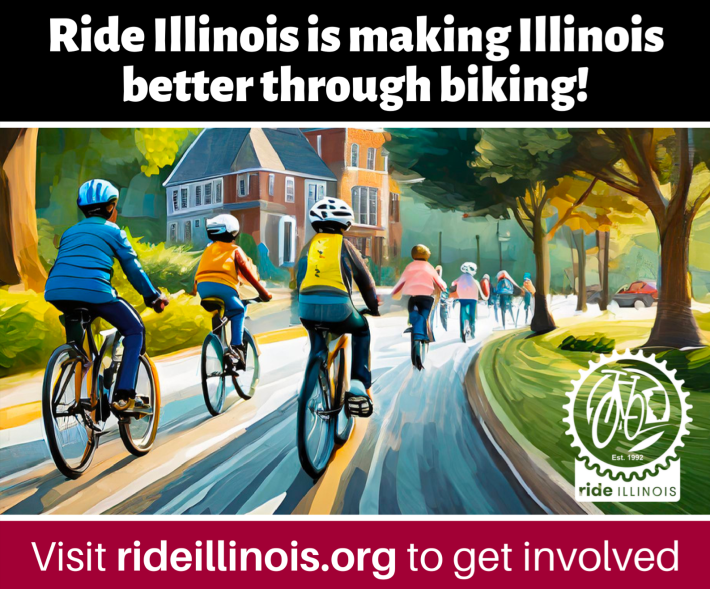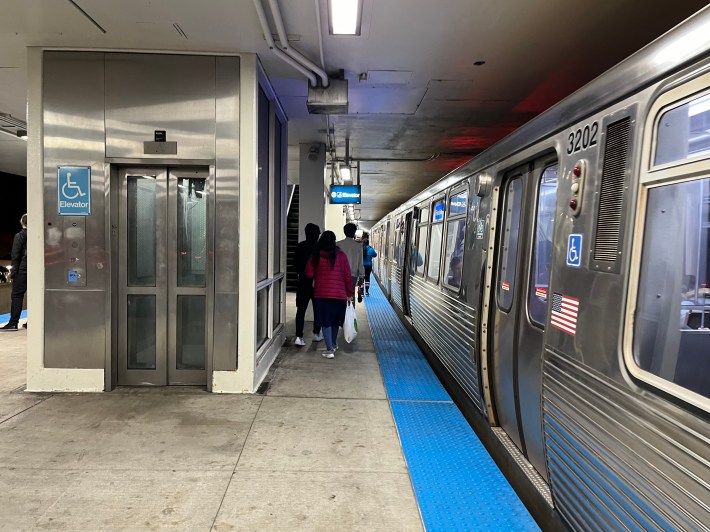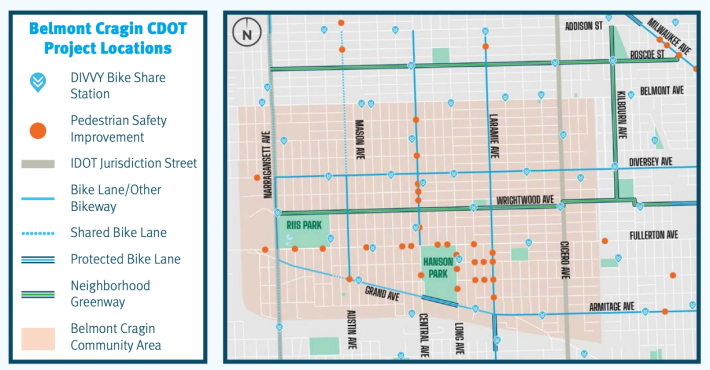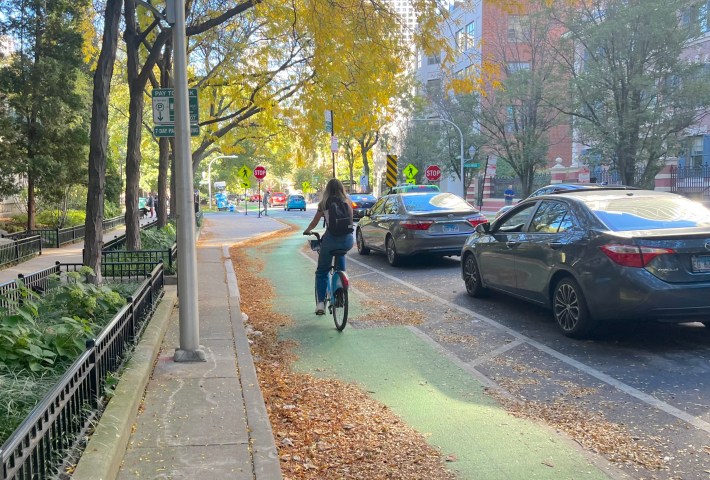
The Active Transportation Alliance's monthly Advocacy Connect zoom chat series gives Chicago and suburban residents a chance to get updates from local sustainable transportation professionals and advocates, and ask questions.
Last Friday, November 8, there was a Chicago Advocacy Connect session. It discussed our city's proposed 25 mph default speed limit, the Chicago Department of Transportation's recent crash report, and how Project Sidewalk is documenting the conditions of local walking routes.
ATA Advocacy Manager Alex Perez kicked things off by going over the organization's current initiatives. "We've been focusing on three campaign priority projects for this year," he said. "They've pretty much been in the budget of the Safe Streets for All, Transit that Works campaign, with a focus on the needs of people who walk, bike, and ride transit. Through the policy change at the state and local level, and then with transit networks, we've been focusing on the financial stability of the transit systems, as well as working with bus rapid transit and bus priority streets, as well as affordable fares and [creating an] accessible system for our transit agencies."

"With Safe Streets for All, we've been focusing on making sure that streets are [safer for] people, including a citywide protected bike lane network, connecting our regional trail network, and slowing down car speeds... And then the last bucket is clean and [sustainable] transportation, which is pushing for... lower emissions and making sure people are shifting transportation options to more active modes."
CDOT Complete Streets Director Dave Smith talked about the new Chicago Traffic Crashes report. "The report is structured in this way where we're using data to guide investments and make decisions on where and how to invest in our infrastructure to make our streets and public spaces safer for everybody," he said. Smith explained that three key issues discussed in the report are the speed and size of vehicles; reckless driving; and persistent inequities. He said the city seeks to address these issues by the lowering the speed limit, elevating traffic safety, and adopting the Mobility and Economic Hardship Index.
"Traffic safety is really at the center of everything that we're doing at CDOT, and we're really seeing the results," Smith added. "When we look at 2023, compared to 2021, which was the height of traffic crashes around the country, we've seen a 27 percent reduction in traffic fatalities in the last two years, which is really incredible. There's a lot of work to do, but what we see by that number is validation that when we implement street infrastructure that prioritizes all users, particularly those who are most vulnerable. When we enact policies and establish processes that center us around traffic safety, we see the results."
Smith discussed the section of the report about the Northwest Side's Belmont Cragin community area. It was the first neighborhood where CDOT partnered with community organizations on its Neighborhood Bike Network strategy, which seeks additional public input for planning cycling infrastructure, including 22 miles of new bikeways. The result has been an 83 percent increase in bike trips in the area.
CDOT has also made pedestrian safety improvements in Belmont Cragin, including raised crosswalks, sidewalk extensions, left-turn traffic calming, and pedestrian islands. The new infrastructure correlated with a 20 percent drop in serious and fatal pedestrian and bike crashes since 2021 on CDOT-jurisdiction streets (as opposed to Illinois Department of Transportation-controlled highways) in the neighborhood.

"All of this stuff has resulted in a much safer community," Smith said. "Belmont Cragin has historically been designated a high-crash community, so it's really positive to see some of these results taking place, and the really important part of that has been the work that's been happening within the neighborhood and the partnership that we've had with the community."
Next was KiAnna McKee-Steen, the project coordinator for the University of Illinois Chicago's Institute of Disability and Human Development. She discussed Project Sidewalk, a collaboration between ATA and UIC.
McKee-Steen said the institute is using this initiative to research how cities collect and use data on pedestrian infrastructure accessibility, such as the prevalence of wheelchair-friendly sidewalk ramps at crosswalks. "Project Sidewalk was developed by the University of Washington Makeability lab, a free crowdsourcing tool that allows users to label sidewalk infrastructure and identity accessibility barriers by virtually moving through city streets on Google Maps."
Up to ten Project Sidewalk participants will each receive a $300 stipend for doing this work. "Applications are due Monday, November 25, and they're accepting applicants from the suburbs as well as the Chicagoland area," McKee-Steen said. "Upon being accepted, participants will attend two virtual 'map-a-thons' in December and January, which will teach them how to map and use Project Sidewalk. There will also be optional check-ins, where participants can show their progress and strategize how to get their data to decision-makers."

Near the end of the chat, Perez noted that the CDOT 2025 budget hearing will be held on Thursday, November 14, after 10 a.m. in the City Council chambers, 121 N. Clark St. (Time is T.B.D., after the hearing on the Department of Streets and Sanitation.) More info is available at the City Clerk's website.
Update 11/13/24, 1:30 PM: A CDOT spokesperson just told us Thursday's scheduled CDOT budget hearing is not happening. We'll keep you posted if we hear about a new date and time.
Read CDOT's new Chicago Crash Report here.
Apply for a Project Sidewalk grant here.
Check out past City Advocacy Connect video chats on YouTube.
Watch Past Suburban Advocacy Connect video chats on YouTube.

Did you appreciate this post? Please consider making a tax-deductible donation, to help keep Streetsblog Chicago's sustainable transportation news and advocacy articles paywall-free.





